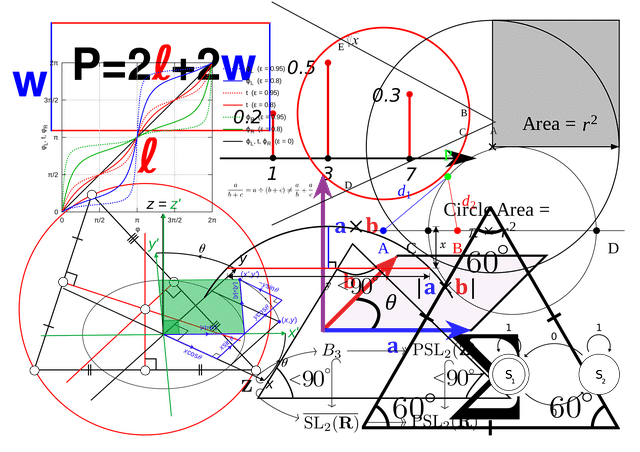Algebra is a branch of Mathematics that deals with symbols, variables, numbers, and the rules for manipulating them. It states that mathematical relationships are used to find unknown values by creating expressions and equations.
A variable is a symbol (usually a letter) that is used to represent a member of a specified set. This “specified set” is called the variable's universal set.
An algebraic expression combines one or more constants, variables, and co-efficient. It also consists of fundamental operations like addition, division, subtraction, and multiplication. Every single term constitutes the basis of algebra. While studying algebra, you find an alphabet representing an unknown number. This alphabet represents a value. The variable quantities can also change with the given mathematical problem.
Check out this comprehensive guide on algebra.

What is a Variable in Algebra?
A variable is a letter representing some unknown; a variable always represents a number, but it carries varying values when written in an expression. By convention, mathematicians usually assign letters(not mandatory) at the end of the alphabet (such as x, y, and z) to be variables.
All algebraic expressions and terms consist of at least one variable. It is the variable that distinguishes an algebraic expression from an arithmetic one. The presence of a variable in a mathematical expression enables infinite possibilities to determine the value of the expression.

A constant is a value or number that never changes in expression; it’s constantly the same. A term is a grouping together of one or more factors. Here multiplication is the only thing connecting the number with the variables. An expression is a combination of such terms.
A variable is a quantity that can change with the context of a particular mathematical problem or an experiment's context. Generally, we use a single letter or alphabet to represent a variable. The most commonly used symbols to represent a variable are alphabets like x, y, a, b, c, m, n, and z.
But sometimes, one chooses to use a letter that reminds one of the quantities it represents, like the alphabet ‘t’ is used to portray time, ‘v’ for voltage, and ‘b’ for bacteria. The alphabet ‘e’ and ‘i’ have very special values in algebra; therefore, they are not used as variables. The alphabet ‘o’ is also not used as a variable because one might mistake it for 0 (zero).
Discover the origins of algebra!
Common Uses of Variables
- To state a general principle
Example: For all real numbers $,x,$ and $,y,$, $,x+y = y + x;$. - To represent a sequence of operations
Example: The expression $,2x+3,$ represents the sequence of operations “take a number, multiply by $,2,$, then add $,3,$”. - To represent something that is currently unknown but that we would like to know
Example: Solve for $,x,$: $,2x+3 = 5,$ - To “solve for $,x,$” means to find the value of $,x,$ that makes the sentence true.
Here, the solution is $,x = 1,$ since $,2(1) + 3 = 5,$.
Types of Variables
A variable is a measurable characteristic that may vary from group to group, person to person, or even within one person over time. There are various types of variables as follows:
Dependent Variable
The dependent variables show the effect of manipulating or introducing the independent variables. For example, suppose the independent variable is the use or the non-use of a particular new language teaching procedure. In that case, the dependent variable may be the score of the students on a test of the content taught using that procedure. In other words, we can say that the variation in the dependent variable depends on the variation of the independent variable.
Independent Variable
The independent variables are those that the researcher has control over. This ‘control’ might involve manipulating the existing variables, such as modifying the existing methods of instruction. This ‘control’ may also involve introducing new variables, for example, adopting a new method for some sections of the class in research settings. Whatever the case, the researchers always expect that the independent variables will affect the dependent variables.
Quantitative Variable
The numerical variables are called quantitative variables. They always represent a measurable quantity. For example, when one speaks about the population of a city or a country, one is talking about the number of people residing in a city or in a country which is the measurable attribute of the city or the country. Therefore, in this case, the population will be the quantitative variable. The quantitative variables are represented in algebraic equations by the symbols x, y, or z.
Find assistance in algebra with private Math coaching near you, having a good teacher can help you understand the small bits of information we often tend to miss out on.
Categorical Variables
The variables which take on values that are names or labels are considered categorical variables. Categorical variables are also called qualitative variables. For example, the color of a ball can be red, green, or even blue. The breed of a dog can be a collie, a shepherd, or a terrier. These categorical or qualitative variables have no natural order, unlike quantitative ones, which have a value and can be added, subtracted, divided, or multiplied.

How to Write Variables
Whenever letters are used in a mathematical context (i.e., as variables), they are typeset in an italic style. This convention helps to visually distinguish letters being used mathematically from those used in a non-mathematical way. When hand-writing mathematics, it's particularly easy to confuse variables with other things, as the following cautions indicate:
Don't write $,x,$ as 
Don't write $,y,$ as 
Don't write $,z,$ as 
Don't write $,t,$ as 
Don't write $,i,$ as 
Don't write $,l,$ as 
For these reasons, when hand-writing mathematics, you'll want to try and duplicate an italic font, as illustrated in the following table:
| typestyle used in English words | typestyle used for variable | how to hand-write |
|---|---|---|
| x | $,x,$ |  |
| y | $,y,$ |  |
| z | $,z,$ |  |
| t | $,t,$ |  |
| i | $,i,$ |  |
| j | $,j,$ |  |
| k | $,k,$ |  |
| l | $,l,$ |  |
| m | $,m,$ |  |
| n | $,n,$ |  |
Algebraic Expressions
Variables are used to change verbal expressions into algebraic expressions, expressions composed of letters that stand for numbers. Keywords that can help you translate words into letters and numbers include:
- For addition: sum, more than, greater than, increase
- For subtraction: minus, less than, smaller than, decrease
- For multiplication: times, product, multiplied by, of
- For division: halve, divided by, ratio.
Example 1
Give the algebraic expression for each of the following.
- The sum of a number and 5
- The number minus 4
- Six times a number
- x divided by 7
- Three more than the product of 2 and x
- The sum of a number and 5: x + 5 or 5 + x
- The number minus 4: x – 4
- Six times a number: 6 x
- x divided by 7:
 or
or 
- Three more than the product of 2 and x: 2 x + 3
Get help with your math class from a specialised tutor on Superprof.

Evaluating Expressions
To evaluate an expression, just replace the variables with grouping symbols, insert the values for the variables, and do the arithmetic. Remember to follow the order of the operations: parentheses, exponents, multiplication/division, and addition/subtraction.
Find useful algebra resources online, grasping and knowing these resources can help you focus on the small details we often miss out on while learning something new.
Using Variable Expressions in Real-Life Situations
You can use a variable expression to describe a real-world situation where one or more quantities have an unknown value or can change in value. To write a variable expression for a real-world situation, figure out which quantity in the situation is unknown and define a variable to represent the unknown quantity. Then, write an expression using the variable to represent the situation. Look for keywords to help you determine what mathematical operations you should use.
For help with all types of math including vedic maths online classes, check out tutors on Superprof.















